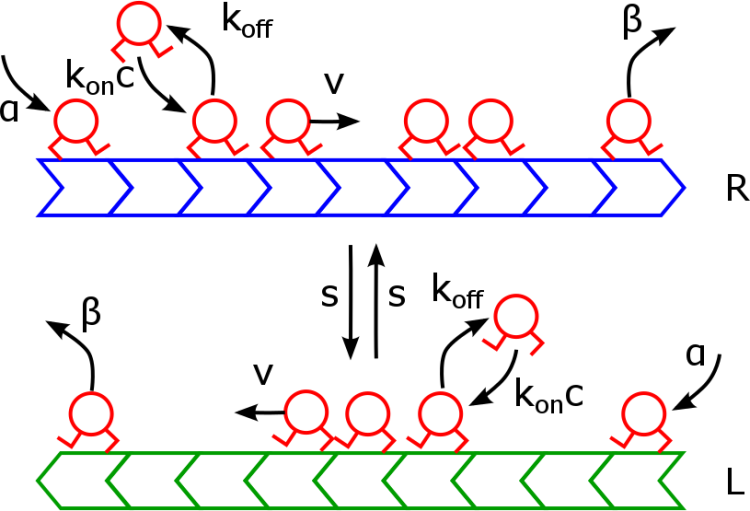Motor protein accumulation on antiparallel microtubule overlaps
Hui-Shun Kuan and Meredith D. Betterton (2016), Biophysical Journal 110, 2034. arXiv DOI: 1509.07219. DOI: 10.1016/j.bpj.2016.03.039. Download.

Biopolymers serve as one-dimensional tracks on which motor proteins move to perform their biological roles. Motor protein phenomena have inspired theoretical models of one-dimensional transport, crowding, and jamming. Experiments studying the motion of Xklp1 motors on reconstituted antiparallel microtubule overlaps demonstrated that motors recruited to the overlap walk toward the plus end of individual microtubules and frequently switch between filaments. We study a model of this system that couples the totally asymmetric simple exclusion process (TASEP) for motor motion with switches between antiparallel filaments and binding kinetics. We determine steady-state motor density profiles for fixed-length overlaps using exact and approximate solutions of the continuum differential equations and compare to kinetic Monte Carlo simulations. The center region, far from the overlap ends, has a constant motor density as one would naively expect. However, rather than following a simple binding equilibrium, the center motor density depends on total overlap length, motor speed, and motor switching rate. The size of the crowded boundary layer near the overlap ends is also dependent on the overlap length and switching rate in addition to the motor speed and bulk concentration. The antiparallel microtubule overlap geometry may offer a novel mechanism for biological regulation of protein concentration and consequent activity.

